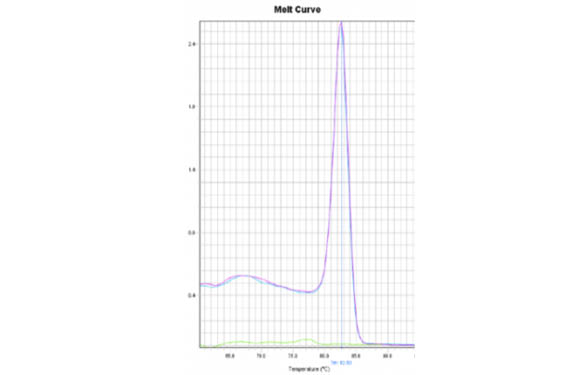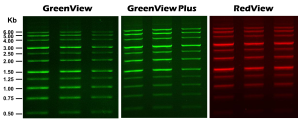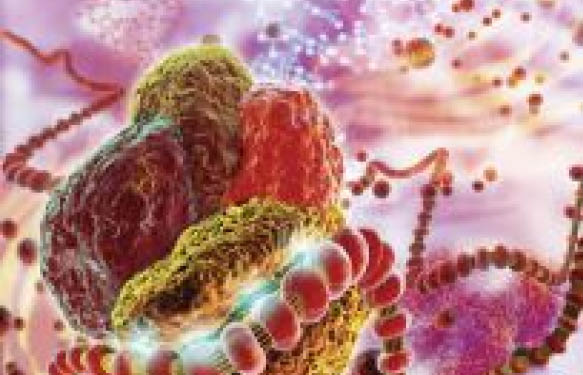We know molecular biologists spent a lot of time setting up their qPCR protocols and aren’t about to change the way they do things. We also know they are technically savvy and like keeping up with the recent advances, so we prepared this brief update about what’s new in the world of qPCR.
Molecular biologists know that in qPCR, you generally have a choice between the dye-based (e.g. SYBR® Green) protocols and the hydrolysis (e.g. TaqMan® MGB) probes. Most researchers have a general impression that it takes a good amount of expertise to set up good qPCR assays with a dye-based approach and that, in the hands of an expert, a SYBR® Green approach is the only way to have truly quantitative PCR. The hydrolysis probe-based approach is thought to be more end-user friendly and will yield reasonably trustworthy results even if you don’t have the world’s expert on qPCR working in your lab and is also the best for multiplexing. The thing that both qPCR methods have in common is that users are generally fairly loyal to their technique, so people tend to have ignored the innovations that have occurred in the field of qPCR over the past several years. Here, we’ll try to bring you a brief history of the past few years of qPCR innovation.
Dye-based qPCR
The SYBR® Green-based qPCR master mixes all apparently rely on patented technology licensed to individual companies each with their own master mixes. Obviously there are differences in the buffer formulations and polymerases used, but in general SYBR® Green-based qPCR master mixes have possibly reached commodity status with companies competing on price alone. One of our favorite affordable mixes is the All-in-One™ qPCR Mix (GeneCopoeia®) which is SYBR® Green based and uses a high-fidelity hot-start DNA polymerase, optimized reaction buffer and high-quality dNTPs to enable specific and sensitive amplification of even low-copy genes or miRNAs. The All-in-One qPCR Mix reduces experimental design time by providing a universal reaction condition that can be used with almost all primers and most real-time PCR instruments. GeneCopoeia’s vast collection of pre-validated qPCR primers have all been quality controlled using this mix, so no primer design is necessary.
Similarly, we like the SYBR® GrandMaster® Mix because it is available in a large variety of formats and sizes, such as with or without ROX reference dye or with a blue color to make pipetting errors more visible. Master mixes using alternative dyes such as the MESA Green and MESA Blue, which do not use SYBR® Green but function similarly, are also available.
Users of these dye-based qPCR protocols are generally fairly loyal to their protocol. Once they have invested the time necessary to set up meaningful qPCR assays they are unlikely to change. As dye-based qPCR users are rather technically (and financially) savvy, they are willing to innovate a bit to save money. Some have found, for example that the protocols for making their own qPCR master mix on websites like openwetware.org are suitable for their needs. In general these recipes require users to purchase a SYBR® Green I Nucleic Acid Gel Stain used for staining agarose gels and combine it with their favorite hot start polymerase, dNTPs, DMSO, and MgCl2.
The intended purpose of these gel stains is of course to replace Ethidium Bromide. It is actually a bit surprising that labs are still using EtBr, which is a known CMR agent routinely spilled in laboratories. The “dirty little secret” that a handheld UV light source would reveal around your agarose gel dock is not necessary anymore. In fact these more modern nonhazardous gel stains have amazing sensitivity even down to 60pg:
| GreenView | GreenView Plus | GreenView Ultra | RedView | |
| Sensitivity (dsDNA) | Sensitive (~2 ng) |
Highly sensitive (~0.2 ng) |
Ultra sensitive (~60 pg) |
Sensitive (~1 ng) |
| Nonhazardous/ Environmentally friendly |
✔ | ✔ | ✔ | ✔ |
| Gel electrophoresis | ✔ | ✔ | ✔ | ✔ |
| dsDNA | ✔ | ✔ | ✔ | ✔ |
| ssDNA | ✔ | ✔ | ||
| RNA | ✔ | ✔ | ||
| Precast gel staining | ✔ | ✔ | ✔ | |
| Post-gel staining | ✔ | |||
| Gel band excision for cloning | ✔ | ✔ | ✔ | |
| Excitation Source | Blue light/UV | Blue light/UV | Blue light/UV | UV |
| Recommended emission filter | 535 nm | 535 nm | 535 nm | EB filter |
Hydrolysis-based qPCR
So clearly the biggest possible innovation in the world of hyrolysis-based qPCR would be some sort of lower cost alternative to the TaqMan® MGB probes. Users dream of the day they will just be able to order custom oligonucleotides instead of TaqMan® probes. The main innovation we find interesting in this domain is the Molecular Beacon technology, which is based on oligonucleotide hairpins with a fluorescent dye at one end and a quenching dye at the other. Molecular beacons form a hairpin when not hybridized to a target, thus placing the 5′ and 3′ termini, and their attached dyes, in close proximity. The fluorescent dye is quenched, yielding no signal. However, upon hybridization of the probe to the target, the dyes are separated and fluorescence is detected. Using a design tool such as Beacon Designer, users can essentially create their own modified oligonucleotides. High quality custom oligos should then be ordered from a supplier like TriLink Biotechnologies.
TriLink Biotechnologies, distributed by tebu-bio in Europe, is the industry leader in synthesizing high quality oligos for research, diagnostics, OEM and therapeutics. TriLink is really the chemists’ choice for bulk nucleic acids and expertly manufactured and purified complex oligonucleotides. In addition to producing high quality custom and catalog nucleotides and oligonucleotides, TriLink is constantly innovating to find chemistry-based solutions to biological problems. The CleanAmp™ dNTPs are simply put, hot-start dNTPs that allow you to turn any molecular biology assay into a hot-start assay. Based on this technology, the CleanAmp™ Master Mixes are also an innovative choice for a variety of PCR applications. Some of the best polymerases on the market are not hot start polymerases, so it would be interesting to see the results one could obtain combining CleanAmp™ dNTPs with high quality polymerases such as the MasterAmp™ or DisplaceAce™ polymerases.
RNA Isolation
Just as EtBr users are expected to switch to less dangerous alternatives like the Greenview products described above, there have been considerable safety innovations in the world of RNA isolation. The RNAzol® solution is excellent for isolating high quality, non-degraded RNA from a variety of cell and tissue types. Of course, this product contains phenol, a corrosive liquid/poison, and guanidine thiocyanate, an irritant. Functioning in a similar column-free manner, the MasterPure™ RNA Isolation Kits eliminate the need for hazardous chemicals and yield-reducing columns. Produced by Epicentre® – an Illumina company, these kits have been prepared and validated by RNA biology experts and yield high quality RNA from a variety of cell and tissue sources.
SYBR® is a registered trademark of Life Technologies. TaqMan® is a registered trademark of Roche Molecular Systems, Inc.





